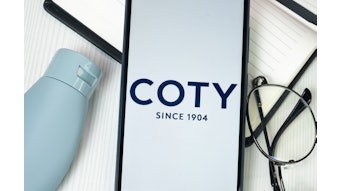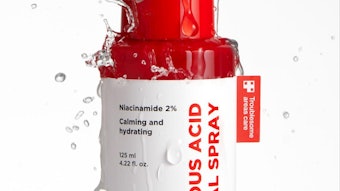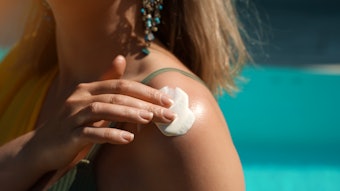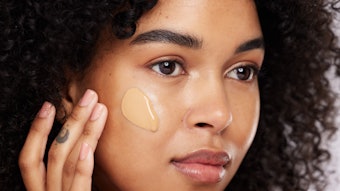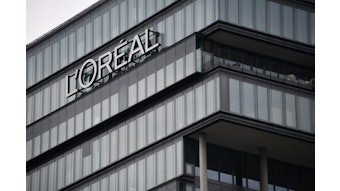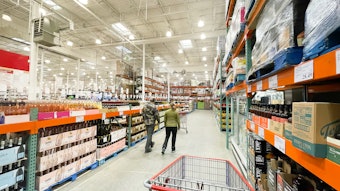- In 2013, for the first time, men spent more cash on male-specific toiletries than on shaving products.
- Tapping into the burgeoning global demand for men’s grooming products is no easy matter, especially for brand owners that have spent decades nurturing female consumers.
- Brazil has been the standout growth market for men’s toiletries during the last five years, and trading down there is less visible in men’s products than women’s.
- In the year ahead, a further segmentation of men’s grooming is expected, particularly in the developed markets where there are opportunities for a stronger development of anti-agers.
There has been a pivotal shift in male pampering culture during the last decade. Men’s toiletries used to consist of shampoo, deodorant, shaving cream and not much else. But from London to New York to São Paulo, bathroom cabinets of middle-class homes now brim with moisturizers, facial cleansers, eye serums, bronzers, concealers, anti-agers and even mud masks—all designed specifically for men. Based on current trends, it is only a matter of time before a full portfolio of men’s makeup becomes part of daily ablutions, too.
A key occurrence happened in 2013 when, for the first time, men spent more cash on male-specific toiletries than on shaving products. Sales of skin care, in particular, boomed. And there will be no going back now. More and more men, it seems, are putting higher stock in looking good. It’s about self-confidence as much as anything else, and the desire to feel more attractive, more successful, and, increasingly, more youthful. For similar reasons, men also are spending more on apparel and fashion accessories.
Little surprise, then, that the world’s leading fashion houses and beauty brands are falling over themselves to grab a bigger piece of the action. Men, after all, have substantially more disposable income than women. In Western Europe, the gap in spending power between the genders is around a third, and it is greater than 50% and 75% in North America and Latin America, respectively. Yet, in both fashion and beauty, women have long been the bigger spenders.
How to Attract Men
Tapping into burgeoning global demand for men’s grooming products is no easy matter, however, especially for brand owners that have spent decades nurturing female consumers. L’Oréal, for example, has channeled substantial investment into its Men Expert line, but the L’Oréal brand, per se, is still fundamentally associated with women. For some men, that remains a barrier to buying it. Smaller rivals specializing in men’s grooming products have latched on to this weakness, with one even joking in its marketing spiel that L’Oréal’s men’s products are women’s products in disguise.
This is a key reason why L’Oréal swooped in to acquire French-based men’s skin care brand Nickel at the end of 2013. Using its financial muscle and distribution power to develop a niche brand with strong masculine credentials makes a great deal of strategic sense going forward.
The U.K.’s Bulldog brand, which markets men’s grooming products that use natural ingredients and sell in 13 countries, is another rapidly growing specialist brand that could become the target of M&A interest in the near future. Here is a comparatively small brand making some of the biggest waves in men’s grooming and beauty care, in large part because men identify with the brand’s simplicity of use and intrinsically male profile.
Worldwide Growth Phenomenon
The top 10 growth markets for men’s toiletries during the last five years, in absolute terms, include Brazil, China, South Korea, the U.S., Germany, India and the U.K. That the list is so varied is another key reason why the men’s category is so compelling for beauty brands.
In China, the category is growing more than 20% a year (at fixed U.S. dollar prices). Rather like deluxe Scotch whiskey or imported cars, there is evidence that middle-class Chinese men equate men’s beauty care with sophistication. Even in a more reserved China, where acts of conspicuous extravagance are less tolerated than they were two years ago, men’s grooming products are continuing to thrive.
There is a similar aspiration-fueled consumption at play in India, where year-on-year growth in men’s toiletries is even stronger than in China. Furthermore, the current generation of young adult men in India’s first-tier cities is shaving more regularly than the generation of their fathers, which, in turn, is fueling new demand for male-specific skin care products.
However, the standout growth market for men’s toiletries in the last five years has been Brazil. The cooling of the economy in the past year led to widespread trading down activity across a number of beauty and personal care categories, but trading down is, so far, less visible in men’s products than women’s. And the 2014 Fifa World Cup taking place in Brazil also will present a huge advertising and marketing opportunity for men’s grooming brands.
A Waiting Game
In the year ahead, the industry should expect to see a further segmentation of men’s grooming, particularly in the developed markets where there are opportunities for a stronger development of anti-agers, for example. In skin care, there will be growth in products designed not only for different skin types but also for different degrees of stubble. The number of product launches for men will still be low in comparison with products for women, of course, but the gap will narrow over time.
Men’s makeup could dramatically speed up its number of product launches too, but the leading brands are nervous about bringing on stream men’s products with an overt female heritage. BB creams, for example, have been touted as a possible mainstream men’s product of the future, but the industry is playing a waiting game. It is a safe bet many of the leading players will have a plan in place for men’s BB creams should the category show traction, however.
It is important to keep in mind that there have been big changes in men’s grooming in a relatively short space of time. As a result, it is now one of the most opportunity-rich categories in beauty and personal care, and the industry consensus is that the market will go from strength to strength over the long term. Getting the strategy right is everything, and no one wants to take a wrong step. There is too much at stake.
Rob Walker, senior fast-moving consumer goods analyst, Euromonitor International, can be contacted at [email protected].
